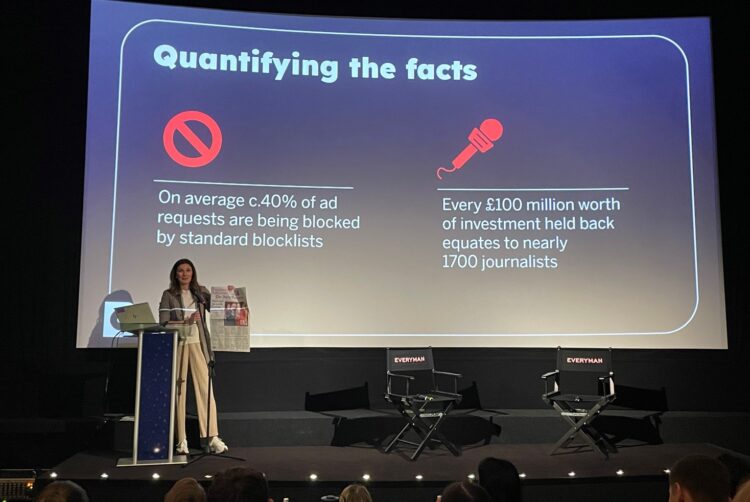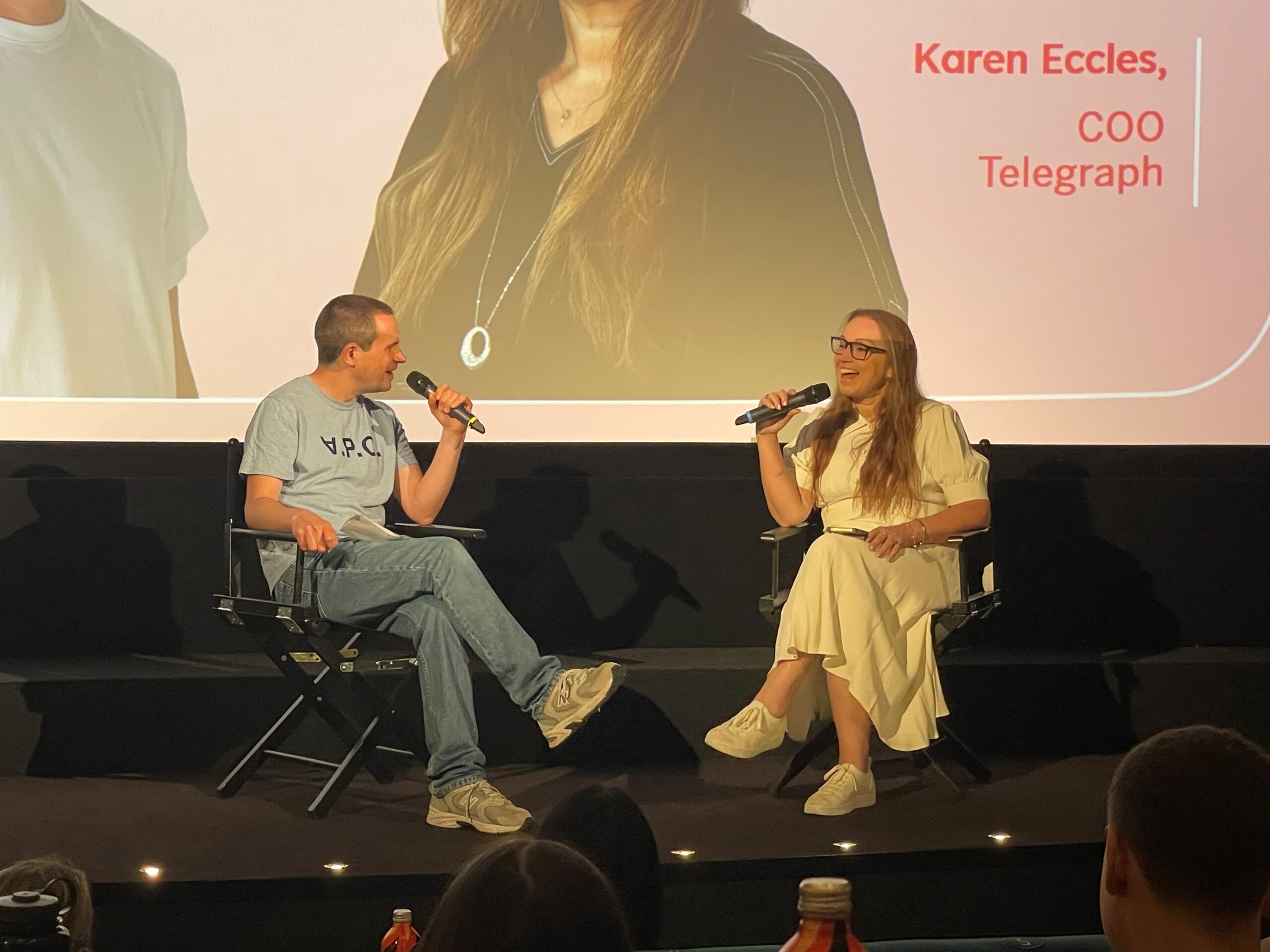Bountiful Cow study finds all news is brand-safe, with ‘unsafe’ inventory most effective

“All impressions on quality news brands are brand-safe, full stop.”
That is one takeaway from a landmark study, by independent agency Bountiful Cow, which found intentionally advertising on premium news brand inventory that had been deemed “brand-unsafe” by brand-safety tools demonstrably improved campaign performance.
Such ads received a higher attention index score (126) than ads on “safe” inventory (120). Although the research’s sample size was relatively small, Bountiful Cow also achieved brand lift of 40% against “unsafe” content compared with just 18% on “safe” content.
This included a 13.8% uplift in action intent, 9% uplift in consideration and 7.5% uplift in preference for ads against “unsafe” inventory.
The study, presented at an event on Thursday in London’s Borough Market, was run using Bountiful Cow’s omnichannel Prospero platform, with three clients: Hilltop Honey, Numan and The Body Coach.
It included activations across four publishers within Ozone’s network of premium UK news publishers (The Guardian, the Telegraph, The Independent and The Times), testing two media lines — one with brand-safety filters applied and one without — in live campaign conditions.
To bypass conventional brand-safety protocols, Bountiful Cow worked with verification partner DoubleVerify to remove blocking technology and use only monitoring tools across the campaigns.
Significant portion of news brand inventory blocked
The idea of testing the effectiveness of “brand-unsafe” news brand inventory came from Bountiful Cow’s Relative Advantage ethos — an effort to give clients a leg up on competition by advertising in effective spaces undervalued by the wider market — as well as a desire to test with real clients research from Stagwell last year that suggested advertising against premium news was effective regardless of context.
According to Bountiful Cow’s head of digital, Charlotte Powers, the results proved that brands can unlock greater engagement and effectiveness by removing unnecessary brand-safety restrictions on premium publishers.
“We know that so-called ‘negative’ or ‘hard news’ often sees the highest level of engagement and dwell time — exactly the kind of environment where advertising can make a real impact,” she said. “But without access to this inventory, we as agencies lose the ability to deliver truly effective campaigns for our clients.
“Now really is the time for us to put a stop to this. There is a huge opportunity for us to unlock untouched inventory for our clients, but also stand in support of an industry that is being held back by legacy technology and outdated blocking measures.”
Advertising adjacent to quality news content is brand-safe regardless of topic
Among Ozone’s portfolio of publisher partners — which also include News UK, Reach, Mail Metro Media — on average 40% of ad requests are currently being blocked by keyword blocklists. This is equivalent to hundreds of millions of pounds’ worth of lost ad investment.
The Media Leader has previously reported that 40-50% of Reach titles’ own coverage around major topics such as the Euros, Halloween and the Super Bowl had been blocked by blocklisting practices.
However, this is the first time a general estimate has been given across the UK’s major publishers. In its Q1 trading update, also released on Thursday, the UK’s largest publisher reported a continued decline in ad revenue (-12.5% year on year).
‘Advertising has become scared of news’
Bountiful Cow’s study found that over 800,000 pieces of content across the publishers involved had been flagged as brand-unsafe — something that Powers described as a huge amount of inventory that brands are “choosing to neglect”.
Powers also noted that, given only around 60% of publisher inventory is easily accessible by advertisers, greater competition for “safe” inventory leads to more expensive CPMs. So not only were ads placed against “unsafe” content more effective, they were also less expensive and more efficient to purchase.
Given the results of the study, Bountiful Cow has committed to develop a list of at least 10 to 20 “carefully chosen” premium news sites for which it will “eliminate the blocking part of our verification tags”.
Selected publishers will need to adhere to qualifying criteria, namely employing “reputable and quality journalists with proven credibility”, having minimal ad clutter and a clean user experience, and maintaining strong brand trust and recognition.
As Bountiful Cow CEO Adam Foley declared: “We’re going to unblock some of the bullshit in this space.”
He added that brand safety has “mutated” over time from “being a necessary tool to protect advertisers from the worst of the internet to one that penalised the best of the internet”.
“To put it more plainly,” Foley continued, “in recent years advertising has become scared of news. And unless we reverse that, the consequences will be disastrous for us as marketers and also as citizens.”
Telegraph CCO: Brands have blocklists with tens of thousands of keywords
In an on-stage interview with Foley (below, left), Telegraph chief commercial officer Karen Eccles (below, right) revealed that, at the worst point towards the end of the Covid-19 pandemic, just 22% of the Telegraph’s news inventory was sellable, compared with 78% blocked by keyword blocklists.
Foley, who was The Guardian‘s director of advertising during the same period, similarly observed that, around that time, 96% of impressions on The Guardian‘s homepage were blocked due to content about illegal drugs. “It was, in fact, a really big day for the Covid vaccine,” he said.
While the Telegraph figure was ultimately reversed due to a concerted effort by its ad ops team, Eccles warned of the dire implications for publishers if advertisers continue to fail to address needless keyword-blocklist practices.
Given the high cost of quality journalism, particularly investigative journalism, she suggested that the more publishers get squeezed, the more content they will need to put behind a paywall and the greater the temptation for publishing clickbait.
“The very likely outcome is there is less resource for journalism,” Eccles said bluntly.
In particular, she warned that mid-sized and regional publishers could be hollowed out or go out of business altogether if they cannot monetise such a large part of their inventory.

To demonstrate the extent of the keyword-blocklist problem, Eccles told the audience about working with one advertiser, which the Telegraph ad ops team acknowledged had a “reasonably short” keyword blocklist of 89 words, that was concerned about advertising around war content.
While the brand ultimately decided to release its blocklist for the Telegraph after a direct conversation with the publisher, articles that would have been blocked would have included: “Inside the civil war at Vivienne Westwood” and “The war against traditional gardens is about to go nuclear“.
In a more dramatic example, Eccles said one “major airline” had a blocklist of 34,000 words across 22 languages, with 3,000 of those words in English.
Examples of articles that would have been blocked by this advertiser included: “How to avoid a Christmas accident when putting up decorations“; “Women’s Ashes was a car crash — England must ditch players to create shockwaves“; “I took crash course in basic DIY — here’s how it went“; “You’re addicted to your phone, it’s a bit like heroin“; and “There’s a snobbery about e-bikes, but they’ve helped injured riders like me get back in the saddle“.
“We have a very complex language,” Eccles added. “The reason our wit and creativity exists and is a massive export is because there are so many multiple meanings for such a high proportion of the words in our language.
“To block […] is just restricting advertisers from appearing on some of the most engaging and high-intent inventory that they could access.”
She noted that the Telegraph, like other premium publishers, employs staff who take proactive steps to police where ads show up against their content, often choosing to demonetise their own stories if they are deemed sufficiently sensitive that they don’t believe advertising should run against them, at least for a given time frame.
Eccles thus implored advertisers to stop considering premium publishers as “in the same bucket as the long tail on the open web” and to regularly check the list of sites their ads are appearing on.
She concluded: “If clients did that, the world would change quite quickly.”




